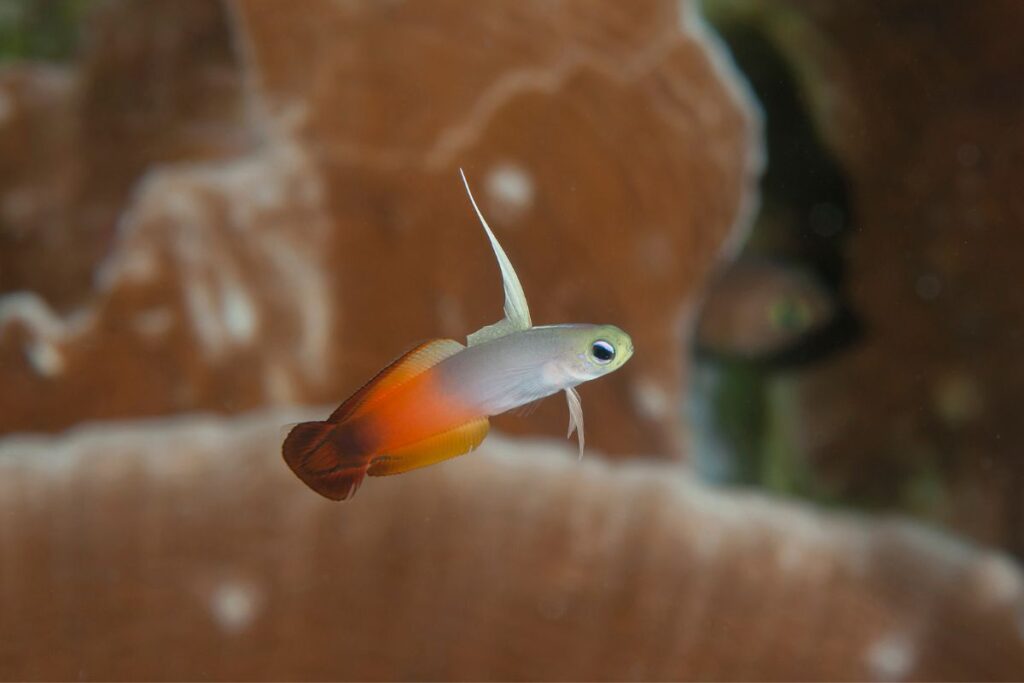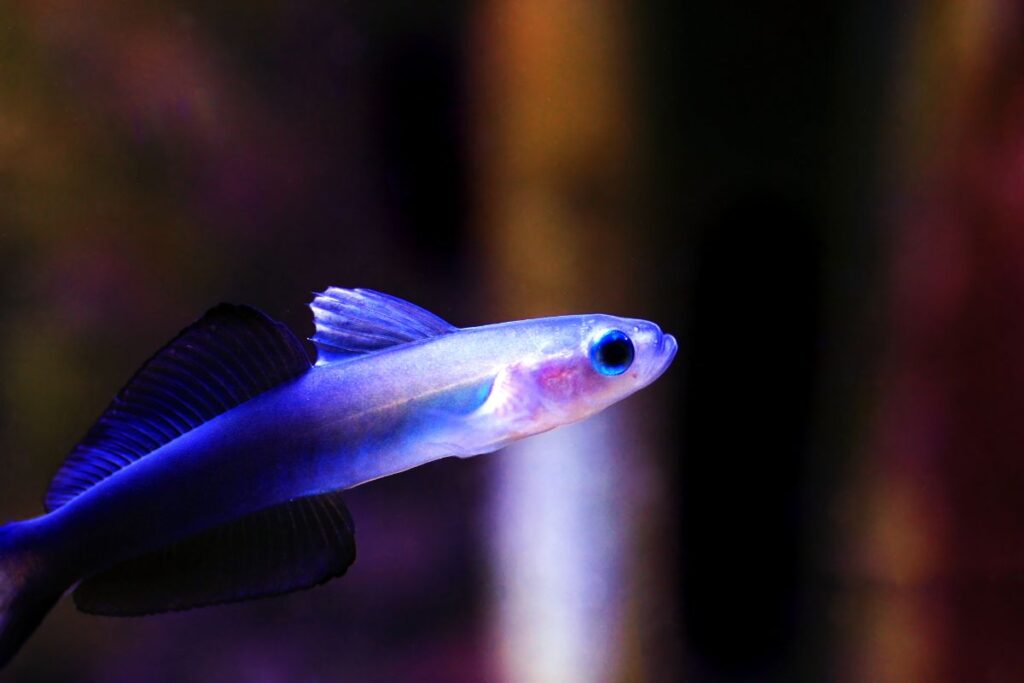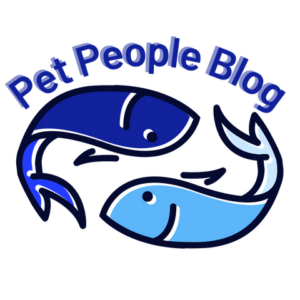Dartfish are fascinating creatures that capture the attention of many aquarium enthusiasts. These small, vibrant fish are known for their distinct swimming patterns and mesmerizing colors. In order to keep them happy and healthy, it’s essential to understand their unique needs and provide a proper environment.
Dartfish are small, colorful fish that require a well-maintained aquarium with plenty of hiding places and a varied diet. They are social animals and should be kept in groups of at least six. Water parameters should be kept stable and clean, with regular water changes.
When I first stumbled upon Dartfish, I was immediately drawn to their striking appearance and curious behavior. Over the years, I have learned that these captivating fish require certain water conditions, a balanced diet, and the right tank mates to thrive.
Creating the ideal habitat for Dartfish takes a bit of effort, but the reward is well worth it. Witnessing their mesmerizing movements and stunning beauty in your own aquarium is truly an unforgettable experience.

Table of Contents
Species Summary
Origin
Dartfish originate from the Indo-Pacific region, specifically around coral reefs and rocky environments.
Lifespan
These fish typically have a lifespan of 3-5 years when provided with proper care and a suitable habitat.
Appearance
Dartfish exhibit vibrant colors ranging from yellow, blue, and purple. They have elongated bodies with a fused dorsal fin and forked tail.
Size
Adult dartfish grow to an average size of 3-4 inches in length.
Growth Rate
During their first year, dartfish can grow up to 2 inches, and their growth rate slows down as they mature.
Behavior & Temperament
These fish are peaceful and get along well with other species in a community aquarium. They are known for their inquisitive nature and interesting swimming style. I once saw my dartfish curiously investigate a new decoration in the tank.
Male Vs Female
Males and females have subtle differences in size and coloration, with males usually being slightly larger and more colorful than females.
Tank Setup
Tank Size
Dartfish require a tank that is at least 30 gallons. These fish are active swimmers and need ample space. Smaller tanks can lead to stress and health issues.
Lighting
Dartfish do well with moderate to bright lighting. I recall how my dartfish became more vibrant in color under brighter lights. Make sure to include a shaded area for them to hide and rest.
Filtration & Aeration
A well-functioning filter and air pump are necessary for maintaining water quality. They prefer:
- Low to moderate water flow
- A steady supply of oxygen
Heater
Dartfish thrive in water temperatures between 72°F and 78°F. Use a heater to maintain a consistent temperature within this range.
Substrate
Dartfish love to burrow, so choose a fine-grain sand substrate. This allows them to dig without injuring themselves.
Decoration
Incorporate various hiding spots like caves, rocks, or PVC pipes. These enable dartfish to feel secure and help reduce stress.
Plants
Live plants offer additional hiding spaces for dartfish. Examples include:
- Java Fern
- Anubias
- Cryptocorynes
These plants create a natural environment while assisting with water quality.
Water Quality
Water Temperature
Dartfish thrive in water temperatures of 72-82°F (22-28°C). I remember when I first started keeping dartfish, I made sure to invest in a reliable aquarium heater and thermometer to maintain a stable temperature.
Water pH
Maintaining a pH level between 8.1 and 8.4 is crucial for dartfish well-being. Using a pH testing kit will help you monitor these levels effectively.
Water Hardness
Dartfish prefer a water hardness of 8-12 dKH. Here’s a simple table breaking this down:
| Water Hardness | Range |
|---|---|
| Soft | 0-4 dKH |
| Medium | 5-12 dKH |
| Hard | 13-30 dKH |
Water Changes
Perform 10-20% water changes weekly to ensure optimal water quality. When I first kept dartfish, I set a reminder on my phone to not miss any water change.
Remember, a healthy environment is key for your dartfish to thrive!
Tank Maintenance
Regular Water Changes: One of the key factors in maintaining a healthy environment for your Dartfish is performing consistent water changes. I remember when I first started keeping Dartfish how important I quickly realized this was. Aim to change about 20%-25% of the tank’s water every two weeks.
Cleaning the Tank: Besides water changes, it’s essential to keep the tank clean. Remove any uneaten food and debris from the gravel using a gravel vacuum.
Filtration System Maintenance: Inspect your filtration system regularly. Clean or replace the filter media as needed to ensure optimal water quality for your Dartfish.
Monitoring Water Parameters: Test water parameters such as pH, ammonia, nitrite, and nitrate levels using a reliable test kit. Maintain a stable pH of 8.1-8.4, with zero ammonia and nitrite levels, as well as nitrates below 20 ppm.
Checking Temperature and Salinity: Use a good quality thermometer and hydrometer to monitor the temperature and salinity of the tank. The ideal temperature range for Dartfish is 72-78°F, and the salinity should be between 1.023-1.025.
Maintaining Aquarium Decor: Regularly inspect and clean your aquarium decorations and rocks. This helps avoid any unwanted algae growth that could harm your Dartfish.
By following these maintenance tips, your tank will be in great shape, providing a healthy environment for your Dartfish to thrive. Happy fish keeping!
Tank Mates
Compatible Fish Species
When I set up my dartfish tank, I chose tank mates that are non-aggressive and can thrive in the same environment to maintain a peaceful community. Some compatible fish species include:
- Clownfish: They are brightly-colored and social creatures that can coexist with dartfish without any issues.
- Blennies: Usually calm and peaceful, they occupy different parts of the tank and can get along well with dartfish.
- Gobies: Sharing similar characteristics with dartfish, the majority of gobies are peaceful and make excellent tank companions.
Incompatible Fish Species
It is crucial to avoid adding fish species that are incompatible with dartfish. These incompatible species may harass or even eat our dartfish friends, causing them stress or harm:
- Dottybacks: These territorial fish are known for aggressive behavior, and can potentially bully and attack dartfish.
- Lionfish: Their predatory nature poses a threat to dartfish, as they might target smaller tank mates as prey.
- Angelfish: Some angelfish, particularly large and aggressive species, can show territorial behavior and stress out dartfish.
I remember having an angelfish in my dartfish tank, which was a mistake for me. Unfortunately, the angelfish became overly territorial and stressed out the dartfish, so I had to rehome it to create harmony within the tank.
Diet
What To Feed
Dartfish enjoy a varied diet that consists of live or frozen foods. Some options include:
- Brine shrimp
- Mysis shrimp
- Finely chopped seafood
When I first got my Dartfish, I noticed they preferred live brine shrimp to any other food. Gradually introduce different food options to find what they enjoy the most.
Frequency
Feed your Dartfish 2-3 times a day, providing small portions to prevent overfeeding. Remember, they have a small stomach and can’t eat too much in one sitting.
Tips
- Always thaw frozen foods before feeding to avoid potential health issues.
- Add marine seaweed to their diet for added nutrients.
- Observe their eating behavior to ensure they’re getting enough food and adjust the feeding frequency as needed.
Remember that a balanced and varied diet is crucial to your Dartfish’s health and longevity. By observing their preferences and following these simple guidelines, you’ll help them live a happy and thriving life.
Common Diseases
Diseases
There are several common diseases that can affect Dartfish. For example, Ichthyophthirius multifiliis (Ich) and marine velvet mainly occur due to poor water quality.
Symptoms
Ich manifests as small white spots on the fish’s body, while marine velvet is characterized by a powdery, velvety appearance on the fish’s skin.
Treatment
To treat Ich, I personally had success using copper-based medications. Marine velvet can be treated with copper or formalin-based treatments.
Prevention
To prevent these diseases, maintain good water quality, quarantine new fish, and monitor your Dartfish closely for signs of illness. Regular water changes and the use of a high-quality filter can also help in maintaining optimal living conditions.
Signs Of A Healthy Fish

A healthy dartfish displays vibrant colors and has an alert demeanor. You’ll notice it swimming actively near the aquarium bottom, utilizing its unique pectoral fins to navigate its surroundings.
It’s important to keep an eye on the fish’s appetite. A healthy dartfish will have a strong appetite and eagerly consume various types of food. I once noticed my own dartfish chasing and catching small live invertebrates quite enthusiastically during feeding time.
Body condition is another factor to consider. The fish should have a well-rounded body without any visible signs of illness, such as lesions or spots. Its scales should be smooth and shiny, and the eyes should be clear and bright.
A good respiratory rate is essential. Normal dartfish gill movement should be around:
| Type | Respiratory rate |
|---|---|
| Dartfish | 60-80 breaths per minute |
Last but not least, peaceful interaction with tank mates is a sign of a healthy dartfish. They should be coexisting harmoniously with other species in the tank without exhibiting any aggressive behavior.
Remember, observing your dartfish and being familiar with their usual behavior will help you promptly detect any signs of distress or illness.
Signs Your Fish Is Sick
One day, I noticed my Dartfish was behaving strangely. It’s essential to monitor your fish for any signs of illness. Here are a few key indicators to watch for:
- Lethargy: A healthy Dartfish will be active and energetic. If your fish is unusually sluggish or not swimming as much, it may be unwell.
- Loss of appetite: Dartfish need a consistent diet. Pay attention if your fish suddenly loses interest in food or stops eating altogether.
- Changes in appearance: Examine your fish for any physical changes, such as pale coloration, spots, or lesions on their body.
- Trouble breathing: If your fish is gasping for air or breathing rapidly, monitor them closely as it may indicate an issue.
Keep an eye on your Dartfish and take swift action if you notice any of these symptoms. With prompt attention and care, most fish can recover and continue to thrive.
Breeding
Breeding Setup
To set up a breeding tank for Dartfish, follow these steps:
- Tank size: Choose a tank that is at least 20 gallons. This gives the fish enough space to swim and breed comfortably.
- Water parameters: Maintain the water temperature between 72-78°F, with a pH level of 8.1-8.4, and a specific gravity of 1.020-1.025.
- Lighting: Provide a natural day/night cycle with moderate lighting to simulate their natural habitat.
When I first bred Dartfish successfully, I made sure to provide them with plenty of hiding spots using rocks and live plants.
How To Breed
Breeding Dartfish can be a bit challenging, but with patience and the right conditions, it can be done. Follow these steps:
- Conditioning: Feed the fish a high-quality diet of live and frozen foods to encourage courtship behavior.
- Mating behavior: Keep an eye out for signs of breeding, such as a male and female staying close together, swirling around each other, and rubbing their bodies together.
- Egg laying: The female will lay the adhesive eggs in a crevice or small cave, and the male will fertilize them.
Care
After the eggs have been fertilized, follow these guidelines to ensure successful breeding:
- Incubation: Maintain stable water parameters during the 10-14 day incubation period.
- Hatching: Observe the tank closely. Once the fry hatch, separate them from the adult fish to prevent predation.
- Feeding the fry: Offer the fry microscopic food, such as rotifers or newly hatched brine shrimp, multiple times a day.
By following these guidelines, your Dartfish breeding journey should be a memorable experience.
Product recommendations for Dart fish:
- API Aquarium Salt: This product helps to promote healthy gill function and reduce stress in fish, including Dart fish.
- TetraColor Tropical Flakes: This fish food is specially formulated to enhance the natural color of tropical fish, including Dart fish.
- Seachem Prime: This water conditioner helps to detoxify ammonia, nitrite, and nitrate in aquarium water, which can be harmful to Dart fish.
- Fluval Spec III Aquarium Kit: This compact aquarium kit is perfect for keeping Dart fish in a small space, and comes with a powerful filtration system.
- Koller Products AquaView 3-Gallon Aquarium Kit: This aquarium kit is perfect for beginners and includes a built-in LED light and filtration system.
- Marina Floating Thermometer: This thermometer helps you to monitor the temperature of your aquarium water, which is important for keeping Dart fish healthy.
- API Quick Start Nitrifying Bacteria: This product helps to establish a healthy biological filter in your aquarium, which is important for maintaining good water quality for Dart fish.
- Fluval Spec III Replacement Filter Media: This replacement filter media helps to keep your aquarium water clean and clear, which is important for the health of Dart fish.
- Hydor Koralia Nano Aquarium Circulation Pump: This circulation pump helps to create a natural water flow in your aquarium, which is important for the well-being of Dart fish.
- Penn-Plax Aquarium Air Stone: This air stone helps to increase the oxygenation of your aquarium water, which is important for the health of Dart fish.
Conclusion
Caring for Dartfish can be a rewarding experience for any aquarist. With proper attention to their environment, diet, and tank mates, these colorful fish can thrive in a home aquarium.
In my own experience, I once had a pair of Dartfish that provided endless entertainment through their playful antics. By maintaining water quality and offering a varied diet, they lived healthy, active lives.
Remember to always research a fish species before adding it to your aquarium. Keep in mind Dartfish compatibility with other tank mates and their requirements for a stress-free environment. Happy fishkeeping!
FAQs
Q: What do dartfish eat? A: Dartfish mainly feed on small invertebrates like copepods and amphipods. You can feed them live or frozen foods such as brine shrimp and mysis shrimp.
Q: How big do dartfish get? A: Most species grow to around 2-4 inches in length, but some larger species can reach up to 6 inches.
I had a dartfish that would eagerly swim to the front of the tank during feeding time. He had a lot of personality and was a joy to observe.
Q: What type of tank setup do they need? A: Dartfish prefer a tank with plenty of hiding spaces, such as rockwork or caves. They also enjoy a sandy substrate for burrowing. A tank size of 20-30 gallons is recommended for a single dartfish.
Some ideal tank mates for dartfish are:
- Clownfish
- Gobies
- Blennies
- Cardinalfish
Q: How do I maintain proper water quality? A: Regular water changes (10-20% every two weeks) and proper filtration are key to maintaining good water quality. Test the water regularly to ensure ideal parameters:
| Parameter | Ideal Range |
|---|---|
| Temperature | 72-78°F (22-25°C) |
| Salinity | 1.023-1.025 SG |
| pH | 8.1-8.4 |
| Ammonia / Nitrite | 0 ppm |
| Nitrate | <10 ppm |
Q: Can dartfish be bred in captivity? A: Breeding dartfish in captivity can be challenging, but it’s not impossible. Provide a stable environment, and be prepared to separate the fry from the main tank for a higher chance of survival.
I hope this information is helpful to fellow dartfish enthusiasts!
Reference: Wikipedia.
